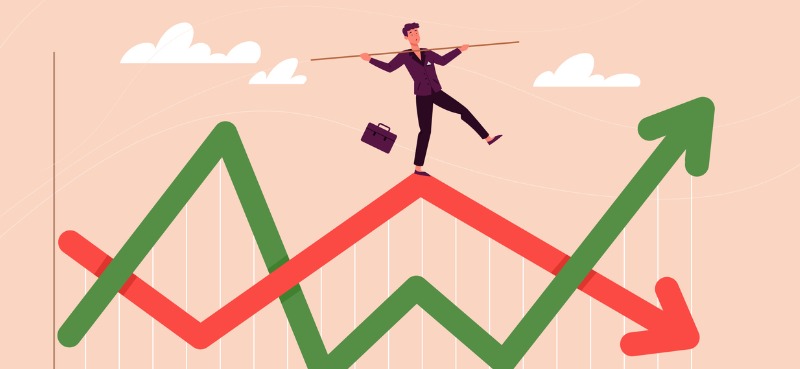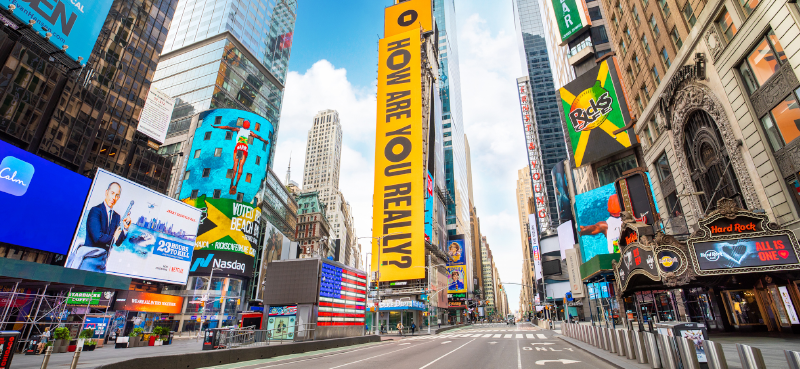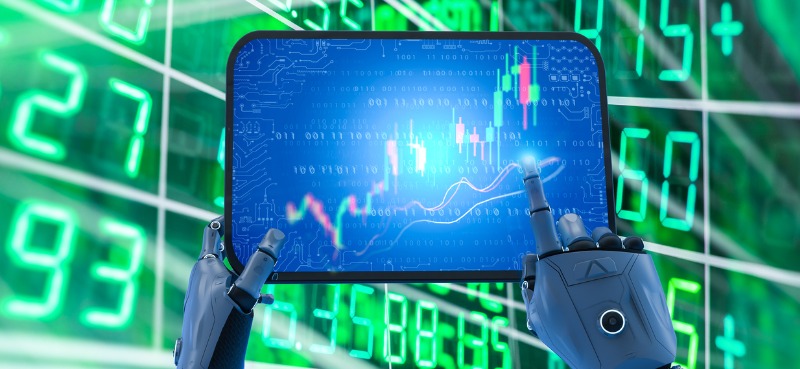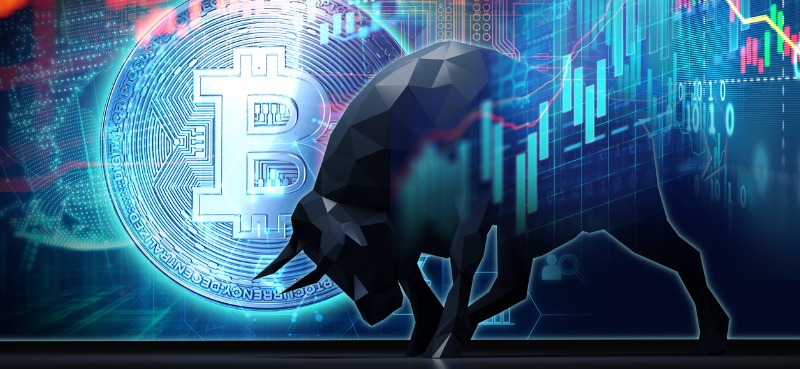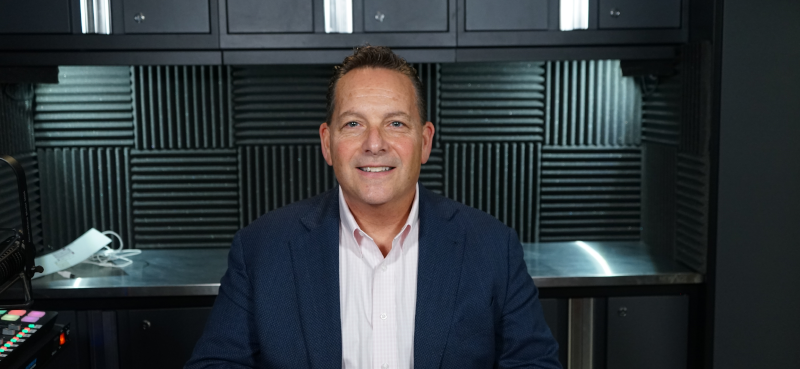My awful experience buying a new car and what it says about the current economy… Why I don’t expect the latest market rally to last… And how to make a fortune from a stock market crash.
- A rant about buying a car [0:30]
- Our “car salesmen” economy [12:00]
- Why I don’t trust this market rally [19:10]
- What the Fed should do to preserve it [30:10]
- How to make a fortune during a market crash [35:34]
Wall Street Unplugged | 954
Why you can’t trust this rally…
Announcer: Wall Street Unplugged looks beyond the regular headlines heard on mainstream financial media to bring you unscripted interviews and breaking commentary direct from Wall Street right to you on main street.
Frank Curzio: What’s going on out there? It’s October 4th. I’m Frank Curzio, host of the Wall Street Unplugged podcast, where I break down the headlines and tell you what’s really moving these markets.
Frank Curzio: So, I bought a new car for my wife this past weekend, for her 50th birthday. And as you know, every one of you know this, when you buy a new car, or a car in general, you always get screwed, no matter what, all the time. No matter how prepared you are, all the research you do, you always walk out of there, you’re like, “Shit, they took me.” Every single time. They always find a way to get over on you. That’s their job.
Frank Curzio: And over the past two years, it’s gotten worse, since there’s only a few cars that are on these lots for you to buy now. If you’re going to order a car, minimum nine months. I don’t know what it is right now, but hey, still go into these lots, there’s hardly any new cars on them. And I know because there’s a specific car, which is a Lincoln Navigator, which we had in the past, that we leased, that we really like, and that’s what we’re looking for, looking to buy it. I was calling dealerships pretty much for the past month. Nobody had them in stock.
Frank Curzio: So, one in Jacksonville actually had two in stock, and I called and they said, “One’s gone already. Try to come today.” It was Saturday. If you can come today, he’s like, “We’ve got a couple people looking from other states.” And there’s so much demand right now that people are willing to buy these things without test driving them and buying them as-is. You’re not going to get the car in the color you want, or your larger rims, or hands-free driving, bells, whatever you want. It’s not personalized. You have to buy the one that’s on the lot.
Frank Curzio: That’s what happened to me when we bought our GMC Yukon Denali, which is a 2021. We bought it around 16 months ago, and we had to buy the one in a lot. There was three of them there. We went there, we were choosing. The guy came out and said, “Listen, you were first here this morning, so you can choose whichever one you want,” because there were three different colors, “But I need you to choose because the other two are already sold.” So, we had to buy the one as-is. And this truck was fully loaded with stuff we didn’t want. There’s two massive, I want to say like 20-inch TVs in the back, and they only worked with Androids. I mean, who the hell? I don’t know. I don’t want to say anything in case you have an Android, but most people have iPhones. How is it not compatible with both?
Frank Curzio: And they’re bulky, they’re ugly, and everybody has iPads now. I don’t know why… I understand that. I have kids, and yes, that was huge. You want to put those TVs in the back on long trips, I get it. Believe me, I get it. But now, everybody has iPads, and you can get good iPads that are inexpensive now. You don’t have to buy these big monitors in the backseat for the kids to watch when you’re driving. But it was only compatible with Androids.
Frank Curzio: Also, we had this thing called air ride suspension system. So ,every time you get in and out of the car, think about if you get gas, the car lifts and goes down and it makes a loud, it’s like shhh, and it comes all the way. Everyone around, you can see it, and they look at me like, what the hell is that? It’s almost like a roller coaster about to take off. You hear shhh, and then boom, it takes off. I have no idea what this feature’s for. I couldn’t tell you if the car rides better with it or without it. I had to buy it because it was included, or I didn’t have a car. We were coming off lease.
Frank Curzio: Now, this Yukon has a little over 60,000 miles on it. It’s all highway. You guys listen to the podcast. You know why. My kids go to school in Jacksonville now, we took them out of the public school system, which is a disaster. So, there’s good schools in Jacksonville, and that’s why we’re moving there and building a house, which is going to be in January. But in the meantime, my wife drives back and forth every day. She spends four hours a day in a car. So that’s why a car that’s 15, 16 months old has 60,000 miles on it. But even at that, it’s a 2021. The trade-in value, which I did my research on, it’s 65,000, and it’s going for over 70,000, 70, 71,000 on different websites if I want to sell it myself. Even with this mileage.
Frank Curzio: So now, we go to a dealership to get this Lincoln Navigator, and I’m going there saying, okay, we’re not going to get screwed. I know we want to buy this right away. It’s not a quick decision, but we were going to buy as soon as we found one. And again, it was a surprise to my wife, it was a surprise up to the point that we pulled up there. Got a babysitter and told her, she had no idea. But I have to have her there when we actually buy it because it’s going under her name and stuff like that.
Frank Curzio: So anyway, the first thing we do is go over the trade in value for my Yukon, and one of the screens in the back that we never ever use has a crack in it. I don’t know how one of my daughters did it. I was pissed off that it has a crack in it. So he goes, “Look, it has a crack in it. It’s going to cost $3,500 to replace.” That was the first thing. I said, “Absolutely not,” no effing way. I didn’t say effing to him, but that’s what I was thinking, because the screen is cracked. Now, I have an iPhone store so I know this. When you crack your screen on your phone, you don’t buy a brand new iPhone. The screen is a hundred and something dollars. That’s why this store does really good business, and I have two people managing it. I don’t even have to do anything with it.
Frank Curzio: And I told him, I said, “There’s absolutely no way.” I said, “I’m not replacing the whole thing for an Android no one’s ever going to use.” And he wanted to charge me $3,500 to replace that. I was like absolutely not, no way. So I said, “I’ll fix it.” Then he comes back and he says, “You know what? It’s only going to be $900.” So, that was the first time that they tried to get over on me.
Frank Curzio: Then, they tell me the trade-in value, “We’ll give you 57,000.” And they give me this sheet just with line items, a couple line items showing how much it’s going to cost minus the car that I’m purchasing and this and that, and it’s going to come to 57. And I just looked at it quickly, and I’m like no, I don’t want to sell this thing $8,000 less. I mean, I could probably sell this myself because everyone’s dying for cars right now because there’s none in the lots. And I have a couple people in my town that I know, two separate people that could sell this, and I’m sure I can get more than what they’re offering as a trade-in.
Frank Curzio: I mean, there was like an $8,000 difference. That’s a massive difference. It wasn’t like $2,000 or $1,500. I’m like, whatever. So, just do it because it’s going to be hassle to do it, whatever. But I mean, that much lower, you were coming to me that much lower in a market where it’s pretty easy to sell cars right now because there’s none on the lots. So, I was really pissed off because I saw on the site that they’re going for 70,000 with that miles, with that amount of miles. And basically, I should be getting at least 65 for this thing. You want to give me 57. So, that was the second time.
Frank Curzio: And here’s where things get interesting. So I tell them, “Look, I’m not trading in my car, forget it.” They’re like, “Oh, okay, so you have to pay for the whole car.” And I’m paying for it in cash. So I’m like, okay, I’ll pay in cash, and I’ll sell this car a different time. So then, they tell me their bank, which is Ford, Ford, pretty big company, that they could only accept a check for a certain amount at one time. I said, “Why is that?” I said, “You can check the credit, I can show you the balance of the account I’m taking the money out of. You can see it.” I said, “You have my address, you have everything. If I don’t pay you, you can come take the car, you have the keys, whatever. It doesn’t matter.”
Frank Curzio: And it’s just the whole thing. It’s kind of like whatever. I even said, “Listen, I’ll write you two checks, one for the amount up to what I can pay for and one for the difference.” They’re like “Nope, you can’t do that.” They said, “How about you finance the car?” I don’t know if you saw the financing rates where they’re 1.9% in January. If you have great credit, it’s 5% now. If you have average credit, it’s 7%. That’s the average car loan right now, 7%. Something to think about if you own auto stocks.
Frank Curzio: So, I said no way. I said, “I don’t want to finance this, absolutely not. I’m not financing this.” So, I called my bank, and we went there really late. It was late in the day when we went there, because I called them like 3:30, they were like, “Make sure you can get here today.” And he wasn’t lying because somebody else actually had the keys showing someone the car when we went there, and there was another person from another state that was looking to buy it, and they were just waiting for a call back for the whole afternoon. They never called.
Frank Curzio: So, I’m calling the bank, we get there late, and it’s running really late, and it’s like nine o’clock. We got there at seven, I think it’s like 9:00 PM. And I happen to call my bank and say, “Listen, could we take this out through my debit card, the full amount?” And it had to go through like seven checks, it took an hour, which is fine because it was a lot. So, it went through seven. So, that was another hour. So, we’re sitting there, it’s like 10 o’clock now. It’s getting late, late, late. And now, at the dealership, you’re like, “Okay, I’m buying it. Got the bank to approve it. They’ll send you the full amount for the car.”
Frank Curzio: Now, you go to the finance guy, everybody goes to the finance guy, and this guy is like the guy who’s been selling, he’s a great salesman, he is awesome. And I’m talking to this guy. He’s a really nice guy. He’s cool, he knows about stocks, he knows about everything. We had to give our license to test drive. So right away, they’re doing research on everybody. They want to make sure like, okay, you’re purchasing a car, nice car. That’s what I would do. That’s what everybody does. They’re probably Googling you, whatever. I guess he knew that I was into stocks or whatever. He’s talking to me about stocks and the Fed, and he was educated, was really cool. And this whole conversation going on for two hours while we’re waiting for my bank to approve this stuff.
Frank Curzio: So now, it comes to the incentives and all the add-on stuff. And all the add-on stuff is usually BS. If it wasn’t, they wouldn’t be offering it to you. So they’re like, “Oh, for this, if you have the car more than three years, you get this and this.” I was like, “I don’t want anything. The manufacturing warranty is fine. I’m probably not going to have the car for three years. I’ll probably wind up trading it in, getting something else after three years, which we normally do. I don’t want anything. Nothing.”
Frank Curzio: They’re like, “Are you sure? This is a great package.” No, nothing, nothing, nothing. I don’t want anything. Because a lot of times, they’ll say, “Oh, if you’re financing, it only adds five dollars to your payment,” your monthly payment of eight years, and next thing, you’re paying like $3,000 for something that you’re probably not going to use and you totally forget about. So anyway, I was like, “No way.” So again, you could see that they’re like, “Oh, okay,” because they make a lot of money on those things, I’m sure they make a lot of commission on them.
Frank Curzio: So, I’m ready to sign a contract, and as I’m going through the contract, I’m signing, signing, signing. And all of a sudden, he makes me sign this sheet that showed $1,500 in extra charges for extra tire wear for after three years, and it was something else. I was like, “I don’t want any of this.” They were like, “Oh, well, we showed this to you already. You agreed to it.” They showed it to me, interesting, when they did the trade-in value of my car, when I didn’t agree with it. And they showed me, it was on the sheet, and two lines of showing the expenses and everything, how much they’ll pay for the car and then how much you owe. And it was really quick. But the first thing I saw is that you’re only going to give me 57,000, so I’m like, “No, I’m not taking it.” So, I didn’t even look at anything else.
Frank Curzio: But they stuck those two extra things into there before the trade-in value, an extra $1,500 that I really don’t need, that they expected that I was going to get on the new car without asking me. And they say, hey, just with these two things, they just went over it, they didn’t explain it to me. And I was pissed, because that’s fucking shady and I hate shady stuff. Don’t be shady. I mean, I get it. You’re there, you want to sell me, you want to make commission or whatever. I get that part. That’s fine. But don’t be shady. That was the shady part of it.
Frank Curzio: So anyway, the guy’s like, “I have to rewrite the whole contract. I thought you accepted this.” I said, “I told you no, I didn’t accept it.” I said, “Instead of writing me a whole new contract,” because now it’s 11 o’clock at night on a Saturday, “Instead of writing me a whole new contract, throw in the weather mats or whatever.” And I didn’t know the weather mats were included in our car, they obviously did, but they were going to charge us again. And my wife looks up the weather mats, and they were like a few hundred dollars. I’m like, “No way. I’m not exchanging this for $1,500.” I said, “Forget it. Write the whole contract.”
Frank Curzio: So, they wrote the contract over, and man, this guy got freaking pissed. And it was late and he was pissed, and he’s writing this whole contract. I mean, he was so… It was weird because I was having a great conversation with him. But he was so pissed that when we walked out, and then we went to the salesman guy again, and he’s like, “Oh, I’m in the process of getting those mats.” Keep in mind, you’re in a dealership. There’s no one in there except for maybe three people now. There’s no one in there. And the guy yells from his office, “No, don’t give him the mats. They’re not getting the mats.”
Frank Curzio: I turned around like, “Relax.” I was like, yeah, he shook my hand, and he shook my wife’s hand, and just left. And this whole entire process, and it ends up, if you’re not paying attention, you’re going to get screwed for like 12, $15,000 by the time you did a trade in, a lot of these add-ons I didn’t want and stuff like that. I’m like, holy shit.
Frank Curzio: But it’s a few things to take note of why I’m telling you this story. One is, it’s the new way of the world, right? In so many industries, once the sale is done, they don’t really give a shit about you. It’s probably why you never really go to the same car salesman more than once when buying a car. Very few people do. I don’t really know anyone that does. And yes, there might be years in between. This time, it was only one year in between. We’re giving up this car because we really, we’re not crazy about this. We were forced to buy this car because of the lease, we paid a lot because we didn’t have any incentives on it, because there was none in the lot. We just really didn’t like it. It wasn’t as comfortable.
Frank Curzio: So now, we get the car, and we’re leaving. And me and my wife are talking about it. It’s so weird when you look at anything you purchase because anything you purchase, it’s like, once that sale, they give you the sale, and they shake your hand, that’s it. It’s like, okay, onto the next client, and that’s it. And it’s been like that for me and the things that I’ve purchased, especially larger items, and even going throughout my house and stuff like that, it’s been like that pretty much for the past few years. And what that does is it makes… It doesn’t create a strong brand or a good brand, and it’s so short-term thinking.
Frank Curzio: This is the way that so many businesses, and that’s why I hate that companies have to report quarterly estimates. There might be a quarter you don’t do good, then you have shady practices, which are legal, but you’re going to put out a big sale at the beginning of the year and spread out the different quarters, and you might put in a quarter where you’re not seeing a lot of sales. I mean, there’s so much manipulation, legally, when it comes to earnings because every three months do we really need to? Every six months is cool, I want to know six months.
Frank Curzio: But every three months, we have to know exactly what these companies do? And it’s hard. I mean, it’s basically built for accountants that are going to make a fortune because you constantly have to get your financials audited time and time again, which is a lot of work. Think of GE or some of these companies that have 20 different divisions. I mean, you know difficult this is and how easy it is to manipulate it, so every quarterly earnings is spread out, and you’re doing well over each quarter? It’s crazy.
Frank Curzio: But another thing is, when you see that with the brand, the handshake, for us at Curzio Research, when you buy something, that’s the handshake for us. That’s like the beginning of the relationship. Because if I don’t show you anything, you’re never going to subscribe to our products again. A lot of people who come for the first time will subscribe for a year on a product that maybe was $39 or $59. And again, that’s a product we’re losing money on after marketing. But we do that to show you our research first, knowing that once you see this, now here’s the high-end products that you’re going to see, and you’re going to really see the research that goes into all these companies.
Frank Curzio: But it’s so weird the way businesses operate now and so many times that just, here’s a guy that was just talking, I was talking two and a half hours with him of stocks and this and that, really cool guy. And because I didn’t want a couple incentives, which I didn’t agree to, which is the reason why you’re rewriting the contract, and I know it’s late and you probably didn’t make as much money as you did, like you’re pissed off. You only shake my hand, you didn’t shake my wife’s hand or nothing. We just bought a very expensive car. It’s an expensive car. I’m like, holy shit, the service there is amazing.
Frank Curzio: But also when you’re looking at car companies, they still have inventory concerns. They still can’t get these cars on the lots. Think about that for a minute, because it’s been like this for two years now with car companies. And now what do they do? And a lot of companies, and you saw Walmart and Target run into this problem, which forced them to warn… Now you’re seeing Nike as well, you have these supply chain concerns, but you see a massive demand. So, you’re over ordering and trying to figure out how I can get the most stuff, inventory on my lot, or on in my stores, or clothing or whatever, as possible. And in an instant, with the Fed raising rates at the fastest pace by a large amount that we’ve seen pretty much in four decades. Industry by industry is quickly seeing demand just disappear, and it’s disappearing very, very fast.
Frank Curzio: It’s not like, oh, well, we see this coming. Or, oh, we’ve got a couple… No, it’s all coming at the same time. So, the fact that getting a loan now for a car, most people do at 7%, which is insane, it’s absolutely insane, which you’re going to be paying that 7%, and they’re probably going to stretch it out to lower that payment for like six, seven years now instead of four or five years, people are going to get nailed on this thing. I mean, you’re going to see demand come down tremendously.
Frank Curzio: And also, while all these cars are coming onto the lot, you’re going to see can they sell them for these prices because you’re looking at inflation across the board, which has raised their cost significantly, and that was fine because they’re able to raise prices. But are you? Because right now, you’re getting sticker price no matter what. You have to sign something. If you go to an auto dealership, you have to sign a sheet that says, I did not get incentives. It’s the second time I did it. I did it last year when we bought the 2021 Yukon, which again, we’re going to sell on our own. And also, this new car. They make you sign a sheet. Hey, just to let you know, you know didn’t get any incentives. What do I have to sign that for? I know I didn’t get any incentives. You’re paying the sticker price.
Frank Curzio: But are you going to be able to charge that right now? Yes, a little bit, because you’re seeing inventory levels still low, it’s still difficult to get cars, but man, all those people that order the EVs and put down a thousand dollars, and I told you, I did it for Rivian probably about 18 months ago, and the price is 30% higher now. And I just wanted to see the process. I’m not going to get a Rivian truck, I’m probably going to wind up canceling the order, especially now. I mean, the price is up tremendously.
Frank Curzio: But now, also to finance it, is up tremendously. You’re going to see the cancellation of orders, you’re seeing it across all manufacturing, you’re seeing it across companies with the biggest backlog. You’re seeing it across the chip sector because the Fed is absolutely crazy, because they keep raising rates and raising rates and raising rates.
Frank Curzio: So, we do have a car company recommended in Curzio Research Advisory, but it’s different from the rest. It has a very, very strong balance sheet. And guys, you have to pay attention to balance sheets right now. It’s important, because if you’re sitting on a massive amount of debt or a company like Ford that said they need to spend 50 billion over the next, what is it, four or five years, I remember when that was nine billion, and then now, it’s raised to 50 billion. That’s debt that’s going to be financed at a much, much higher rate. And now, you’re seeing car companies, I mean, I don’t know if you saw Honda’s results, probably not because no one pays attention to Hondas, which is the Acura brand is under that and stuff like that. And they do have hybrids.
Frank Curzio: So, Honda just announced, and their report is 17% decline year-over-year in sales for the month of September and a 35% decline quarter-over-quarter. They said September was their best month since May. The company also said supply chain issues improved, meaning you’re getting more cars on a lot, but what, you’re not selling them now? I mean, I don’t know, again, I’m not too sure about Honda and how many people buy Hondas or whatever. It’s probably different for the Fords and GMs, definitely Teslas.
Frank Curzio: But when you’re looking at some of these autos, you have to be very, very careful because you’re going to see demand, just like we saw in the chip sector is gone, just like we’re seeing in retail. I mean, you’re seeing this one by one within sectors, and plus rates are going higher. A lot of these companies are sitting on a massive amount of debt with car companies, which they always are. They’re always financing, which is fine. They usually do amazing sales. But their margins are going to shrink. If your costs are going higher, and you might not be able to sell it at sticker anymore, you’re going to see demand come down. People have less money, the market’s coming down.
Frank Curzio: But it’s just interesting to see it in real-time, when you put things in perspective, real-time, what the Fed is doing, it scares the shit out of you. That’s what’s going on with the markets right now. And it’s nice to see stocks rallying for two days in a row. It’s really cool, mostly because we’re seeing indicators at levels that almost guarantee a short-term rally, like the bull and bear from Bank of America, which is at zero. It’s at zero. It’s a contrarian indicator. That means there’s the negative, just the amount of people, the put call ratio, it puts into effect. It puts in the VIX, it throws in there, it throws in companies under their 200 day moving average. It combines everything and goes from zero to I think 100 or whatever it is, or what, a 10, whatever it is.
Frank Curzio: But zero means that there’s so much negativity to market, nobody wants stocks, that it’s a contrarian indicator, and stocks almost always go up because all the bad is factored in. Now, when you look at that indicator, it’s been at zero, I think it was like eight or nine times, dating back the last 20 years, and it’s the ultimate buy signal. Almost every single time we hit this level, it might be there for a little while, but stocks were higher. Except for one thing, which people don’t want to talk about. They’ll say, “The bull bear is at zero, you’ve got to buy, you’ve got to buy.” And again, you’re seeing so much negativity, it’s not surprising to see where should the airlines be trading below the levels in the heart of COVID, when you had every one of them grounded? I don’t know. I don’t think so.
Frank Curzio: We know things are bad, but they’re still seeing demand okay. They have pricing power, the airlines, because you can’t really start a new airline or whatever and people need to travel, but should they be trading below that? No. So, you’re seeing levels, I mean, some stocks are coming down to levels that don’t make sense, and I get it, and that’s when you see this rally. But when you’re looking at that bull bear indicator, there’s one thing you’re leaving out because you can’t just look at the chart and say every single time this happened, this happened, because times are different. Because we had zero every one of those times, and when we had zero, it’s usually associated with a big pullback in the markets, which thus weaken sentiment, these sentiment indicators.
Frank Curzio: If the market’s skyrocketing, people are happy, they’re buying stuff. You’re not going to see this level at zero. You see it when stocks are coming down, or you have Russia and Ukraine tensions, or we saw it come down a lot with China. Remember the tariffs, and holy cow, global trade’s going to get destroyed? Remember all that shit and the millions of stories, which is all bullshit, which didn’t happen with the US. But you see it come down during times of uncertainty, like now. Except every one of those times when we were at zero, the Fed was actually lowering rates. That’s a big difference. We didn’t have massive runaway inflation. That’s a big difference.
Frank Curzio: So, when you see the markets and they’re crashing, where we’re down over 20%, and we have a Fed that’s aggressively raising rates, not like that’s going to continue to tighten for another three to six months. It’s insane when you think about that. If somebody told you that in economics day, they would slap you in a face and be like, that’s never ever going to happen, ever, no matter what. No matter what, that’s not going to happen.
Frank Curzio: You saw a little bit of this in the eighties, but not like this. So, I think it’s going to be short lived. Maybe we have a good week, two weeks, but the CPI number is going to be released, I think it’s the 12th or the 13th, around there, and it’s going to come in hot again. Goldman Sachs just came out with a report predicting it’s going to reach a new peak for September due to high food prices, rent staying steadily high, which they’re going to stay high. We all know that. Meaning, will likely then rally into the October 12, 13 CPI reading, which is going to be followed by retail sales the next day, I think that’s the 14th, which is also probably going to come in a little bit hot since this is lagging data. It’s lagging data still showing that we have inflation.
Frank Curzio: But what is it going to do? It’s going to reinforce the Fed and Powell and say, hey, we’re still seeing inflation, we haven’t controlled it yet, and they’re going to continue aggressively raising rates through this year, likely into next. Now I hope, I mean this, I hope 100% that I am wrong on this call because $36 trillion, trillion, has already been wiped out of the global stock and bond market already. Already. That’s the biggest loss in the history of the market. $36 trillion, we’re talking about, what, in six months’ time? The housing market is frozen, retailers are sitting on record inventory, and they’re having trouble selling it even at lower prices.
Frank Curzio: Look at Nike. I mean, it’s very rare that you see a major retailer, Walmart did a great job of this, when you have a lot of inventory, especially when you’re a retailer in apparel or Walmart, it’s seasonal. So, when you have a lot of inventory, you’ve got to sell that shit right away, sell it wherever you have to. If you’re clothing retail, throw it into TJ Maxx, throw it into Ross stores, the resellers of sellers, throw it into those guys and get rid of it. You’ve got to get rid of it.
Frank Curzio: But Nike’s inventory was up 23% last quarter, and this quarter it was up 44%, like $9 billion or something. That’s why the stock got destroyed. What are you going to do with that inventory? You’re going to have to lower prices considerably. But did Nike think like, hey, we’re Nike, we don’t have to lower prices? When in reality, as someone who bought sports shirts and played sports my entire life, there’s really not too much of a difference between buying a Nike dry fit shirt or an Under Armor dry fit shirt, or even Russell, whose brand I thought was nothing for a while.
Frank Curzio: But I mean, if something’s $12 compared to $25, which is Under Armor wants to command that price for t-shirts that you work out in, so does Nike, you’re going to have to lower your prices, which is deflationary. But 36 trillion wiped out, the housing market is frozen. You look at the inventories, and look at the UK. I mean, if they’re looking at the UK, where people are making fun of the UK, what did you expect the UK to do? They were forced to intervene because pension funds are receiving margin calls. You could make fun of them, but they were forced to intervene with what’s going on right now.
Frank Curzio: And you look at the US, and we’re going to hurt. Look at the rest of the world, your reason why the dollar is surging outside of the last two days. Credit Suisse is talking about having plenty of liquidity. We have plenty of liquidity. No, when a bank has to come out and say they have strong liquidity position, it means they don’t have a strong liquidity position. There’s nobody that comes out and says that unless it’s not true. I’m not telling you that Credit Suisse is going to fall, but I’m just saying that for a CEO to have to come out and say that, watch out.
Frank Curzio: Look at the chip sector, went from boom to bust in like three months. We’re building four billion to $10 billion facilities, and all of a sudden, we’re like, whoa, what happened to demand? And we look at the last two 75-basis point hikes, not even factored in yet. Look at freight prices for ocean shipping, down 80%. We look from Asia to West Coast routes, that’s 80% you’re down. Remember the big bottlenecks and the prices going through the roof? They’re down 80%. That’s a clear sign demand is not just slowing, it’s disappearing.
Frank Curzio: But what I called the bottom in June and said, hey, you know what, we’re starting to aggressively buy stocks. I was making two or three of them recommended in my newsletters, said hey, you know what, we’re pretty close, about two or three weeks ahead of that. But we saw massive insider buying, a new company’s going to buy back their stock. We’re trading out levels. This was under the same assumption of which is driving the rally in the past two days, the assumption that the Fed has to, has to, has to, has to stop raising rates immediately. Otherwise, it’s going to cause not a recession, but a depression. We’re seeing the cracks. They’re everywhere. They’re going to get worse, and you’re not even close to stopping.
Frank Curzio: But what scares me, they only look at the CPI and jobs data. Those are the only two things they’re looking at. Both the lagging and both are going to continue to show that inflation is not peaked. Which means that the Feds look at those two indicators, what are they going to do in a week and a half from now, week, whatever, that they’re going to see these two indicators and the market’s going to turn immediately, because it’s suggesting that they’re going to continue to raise rates into next year. This rally is suggesting that the Fed is done. I thought the Fed would be done. Companies thought the Fed would be done. That’s why they were buying at that fastest pace I think since 2009, insiders were buying.
Frank Curzio: Now companies, not only a warning, they’re removing their guidance because they have no idea what the Fed’s going to do. The earnings estimates for next year, for 2023, and I’ve never seen this. I’ve never seen this in my 30-year career, this kind of range, they range from growing 10% to declining by 7% for 2023. How do you invest as a company when it comes to CapEx? There’s a reason why you’re removing guidance.
Frank Curzio: When you see demand surging beyond belief because you’re printing money like crazy, you know, after COVID, everything opens up, and now you’re investing accordingly, and just like a light switch, demand just shuts off immediately. How are you looking, if you are a CEO, how are you investing over the next 12 months? You know how difficult that is? Of course, you’re going to have to remove guidance. There’s a lot of companies that are going to remove guidance. They should remove guidance because they have no clue.
Frank Curzio: Usually, like, okay, you’ll see demand slowing. It shows up over months, and we see certain sectors, they have AI all over this shit, all these companies, for 10 years. That’s what AI is. Any new company that tells you, oh we just started a new company and it’s going to have AI, sell it because it’s bullshit. AI is tracking data over a long period of time that’s going to give you predictive results. That’s what AI is. And all these companies, these major companies have AI all over their systems and social media, AI all over their systems. That’s why they’re able to predict exactly what you’re going to do tomorrow, a week from now, a year from now. And they are removing guidance because they have no idea 100% cause of the Fed, because they’re like, the Fed just can’t keep doing this.
Frank Curzio: But if they’re looking at those two indicators, the CPI and job market, they are going to continue to raise rates, and that’s scary because the expectations for short-term rates, which are 3.25% right now, so expectations of the short-term rates average 4.3% for the entire 2023, 4.3%, that’s how much higher we’re going. If that’s the case, everyone should sell their stocks and put your money into the two-year, which is yielding twice the S&P 500 right now with zero risk. Why wouldn’t you do that at 4%? It makes sense. Was it Robinhood, I believe that just came out and said you could earn 3% or 4% on your money market account or whatever, and you’re trying to get more assets in there.
Frank Curzio: By the way, they’re hosting a conference in a couple days. They have of the biggest lineups I’ve ever seen for any conference, Robinhood, interesting. Larry Fink, Griffin, Ken Griffin, there’s a ton of huge, David Einhorn is going to be speaking there in a couple days. I mean, it’s being hosted by JP Morgan, but it’s Robinhood. This is where they’re trying to get those assets in there. But why own stocks in an environment where nobody has a clue what the Fed’s got to do? Because it makes no sense for them to continue to raise rates based on the data that we’re seeing today, and even over the past 30 days.
Frank Curzio: You say, Frank, sell all your stocks. Why are you holding stocks in all of our portfolios? Exactly why the market’s going up today. Because I am hoping that the Fed will come to its senses, and when I say come to its senses, I’m not talking about easing. That’s a pivot to me. You’re not going to say, oh, well, we’re going to ease… No, just stop, stop raising rates for a while. This way, the last two 75 basis point hikes make their way into the system over the next three to six months. That makes sense. You need to see what happens. This takes time.
Frank Curzio: There’s a reason why when you predicted, all the firms were predicting in January there’s going to be four rate hikes. They didn’t think they had to say 50 basis, 75. They all assumed there’s no way we’re going to raise more than 25 basis points because nobody does that anymore. No one did that for years and years and years. Maybe you get a few 50 basis. That was 2008, 2009. But it’s 25 basis. Why? Because these things are very powerful. These hikes and cuts of 25 basis points are extremely powerful, and they take time to go through a system.
Frank Curzio: When you raise by 75 basis point for three straight quarters, and you’re going to continue with another 50 basis point increase, and then you’re going to go into like, so to hit 4% by year-end, and then go even higher into next year and average 4.3%, look what’s going on with the markets right now. The S&P before this two-day rally was down, what, 23% as highs? The NASDAQ getting annihilated. And look at countries all over the place, where the UN has to come out and say, listen Fed, could you do me a favor? Stop raising rates because you’re destroying every country right now. Every country, everyone’s in so much debt, and you’re raising rates incredibly, and you’re not even giving a chance to factor in.
Frank Curzio: That’s why I said all these guys should be fired. They have absolutely no clue. They’re unqualified to manage in this environment, especially when the power that you have is to destroy the global economies around the world, which impacts lives, the health, life, and death. I’m not exaggerating when I say that. And with food prices and energy prices and things like that.
Frank Curzio: So, the rally right now is based on, well, we saw enough, the Fed has to stop. 35 trillion wiped out of the fricking markets. How much more could the Fed go? But yet, I thought that would be the case, the Fed would stop a while ago. I thought the Fed would stop last quarter without the 75 basis point hike or raise 50 basis points and say that’s it, we’re done. That’s what I was expecting, and I think stocks would’ve rallied on that. But to go 75 basis point and almost a point, which is, what, a 33% factored in, going into that last meeting. And now, you’re still pedal to the metal and every single Fed president comes out saying, we haven’t done enough yet to control inflation? Holy shit.
Frank Curzio: So, it’s all up to the Fed. That’s why you have to be a little bit invested here because those stocks are going to take off after the Fed does its job and says, okay, enough’s enough. That’s why you’re seeing these rallies. Hopefully, it won’t be short-lived, but I think it will because when we see the CPI in a week from now, and we see retail sales being strong, job data is on Friday. Again, those indicators are not going to show what the manufacturing index showed, what was it, yesterday? They’re not going to show that, that manufacturing is crashing completely and all these companies are warning and removing guidance. Those indicators are not going to show that.
Frank Curzio: But those are the ones that the Fed looks at. So, let’s see what happens. A lot of confusion, a lot of uncertainty. And like I always said, uncertainty is the death of stocks and equities. If you have uncertainty, you’re going to see stocks go down every time. Right now, we’re in an uncertain environment, this rally’s based on hope. I’m hoping as well, that the Fed takes a step back. You don’t have to cut, and you can even raise further, but just sit back and wait. That’s what you need to do, going into November.
Frank Curzio: If you say, okay, let me sit back and wait, you have China coming out that’s going to say, okay, no more, no bullshit COVID policy. We’re going to let people actually hang out and buy stuff, and it’s okay if they have a little bit of a cold, which COVID is for most people, we’re fine, especially those who are vaccinated or whatever. Don’t want to get political on you.
Frank Curzio: But once they open up, that’s a growth engine. If you get that and the Feds saying we’re going to wait and see, you’re going to see a nice rally in stocks from here of 10 to 15%. If not, we could see a crash beyond belief this month if the Fed comes out and says that, hey, you know what? We’re not stopping at the CPI. Remember, the data going into the next meeting, which is early November, through October, if all that data comes in, not all of it, but CPIs going to come in higher, jobs going to come in higher, retail sales are probably going to be a little bit strong. Those are the three data points the Fed’s going to use in order to go into November to say, hey, we’ll go on a 50 basis point hike. All of them are going to be strong.
Frank Curzio: What’s going to change the Fed’s mind? I have no idea. It’s going to be an ultimate crash in stocks, especially since right now if you’re looking at, there’s very few buybacks. Companies aren’t buying back stock right now, even though these had the massive buyback announcements, they’re not buying back stock because they don’t know what’s going on next year or the next few months. And you’re going to have massive tax loss selling, which a lot of the hedge funds have to do, all the hedge funds, all the mutual funds have to do before October 31st. And what are they going to do? They’re going to sell at the lows. When companies at lows that you think are cheap, like airlines, they’re going to sell them at the lows. All that’s going to take place.
Frank Curzio: Let’s see if something changes the Fed’s mind. Again, I’m hoping I am wrong on this prediction because this hurts everybody. This hurts everybody, unless you know how to play the markets from the short side, which now, finally, we’re starting to see strong demand for Genia’s product, which is Moneyflow Trader. And it’s not hedging, it’s her booking a hundred percent plus gains in months because everything’s crashing and keeps continuing to crash. So, if the Fed is going to continue to bring rates higher, you think things are bad now, wait. That’s a newsletter you want because it’s not just going to hedge, and it’s not like you’re putting in cash, you’re making a fortune.
Frank Curzio: When the market’s coming down, leaving you with a massive cash pile, this whole pile of cash that you could invest in assets that are going to be trading at pennies at a dollar, that’s how you invest. That’s how you become extremely, extremely wealthy. That’s how you create generational wealth by doing it, not by investing in the highs, having a ton of cash at the lows to buy the best assets at cheap prices because they’re being sold off because we’re in this massive leveraging process that’s likely going to continue if the Fed continues to raise rates. Let’s see what happens.
Frank Curzio: So guys, any questions, comments, feel free to email me at frank@curzioresearch.com. I’ve gotten a lot of emails in because we set up a three month very, very low price trial for Moneyflow Trader. And a lot of people say, “Okay, I’ll try it.” Which is good because if you like it, at least it’s going to teach you how to buy puts, how to make money when things crash, not just protect yourself, or you can put your money in your cash if you want, but now we’re seeing a lot of demand because it is a very expensive product, one of our most expensive products, and I know it’s a tough market.
Frank Curzio: So, we created a special offer for three months. We’re getting lots and lots of people come in for it, which is great. And again, after three months, I’m sure a lot of you are going to subscribe to for the year. If not, at least you educate yourself on this, following Genia, because she’s one of the best in the industry at this and her performance is probably, that newsletter hedge fund, I haven’t seen anyone even close to the performance she has in this newsletter. So, I’m proud to have that under our umbrella.
Frank Curzio: If you’re interested in subscribing to that or seeing that or getting more information on Moneyflow Trader just for that three months, again, we don’t ever really do that, as you know. So, just three months because of the conditions and everything. But I want you to learn as much as you can about this, and that’s the easiest way to do it. But if you’re interested, email at frank@curzioresearch.com. Really appreciate all the support, and I’ll see you tomorrow again. Take care.
Announcer: Wall Street Unplugged is produced by Curzio Research, one of the most respected financial media companies in the industry. The information presented on a Wall Street Unplugged is the opinion of its host and guests. You should not base your investment decision solely on this broadcast. Remember, it’s your money and your responsibility.
P.S. If you’re a member of Genia’s Moneyflow Trader, you could be making a killing every time the market dips… I’m talking triple-digit gains in a matter of weeks.
Guys, I want all of you to have access to these trades NOW.. So email me here for a special deal—and be sure you’re in on Genia’s next big winner…


